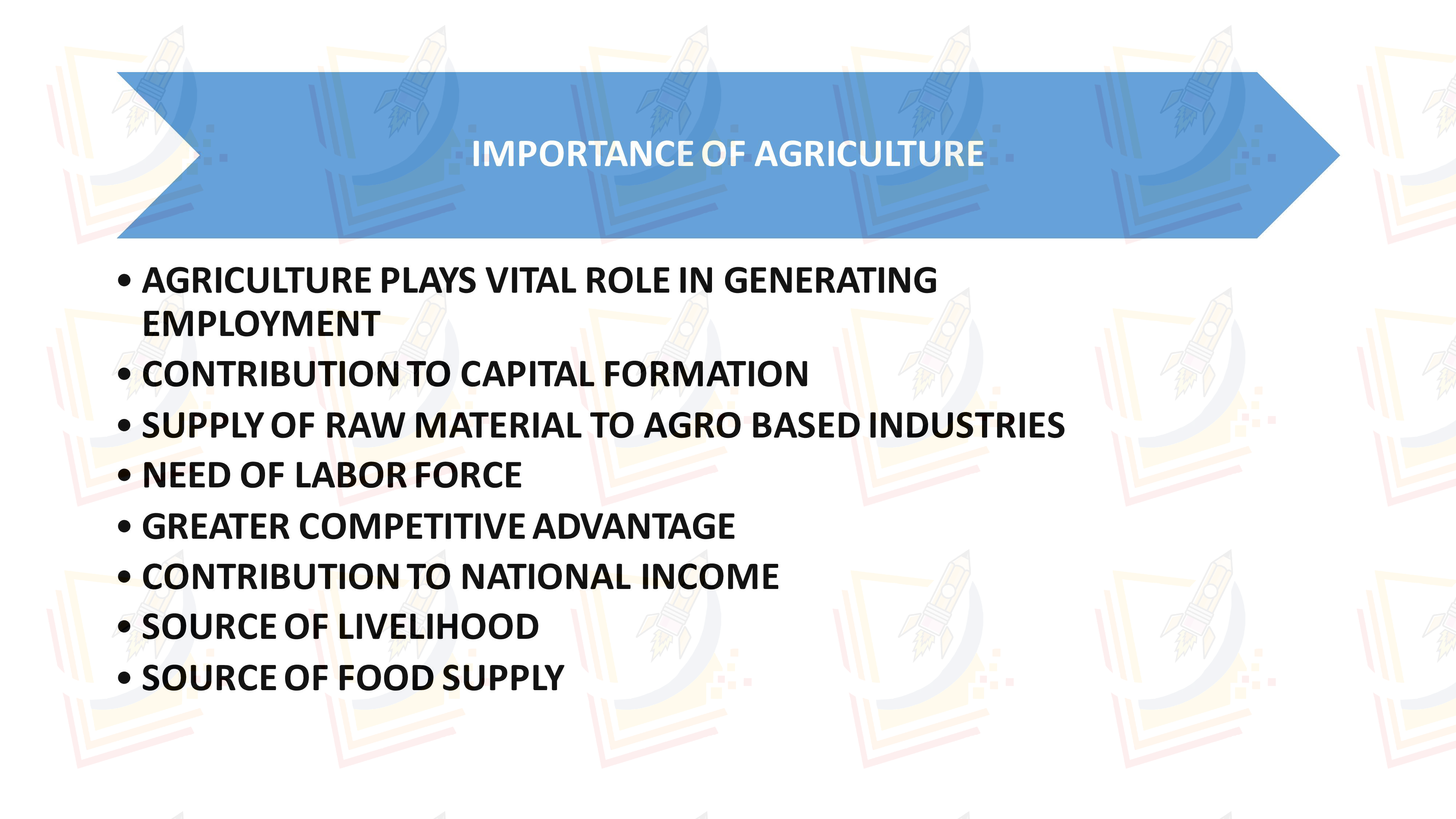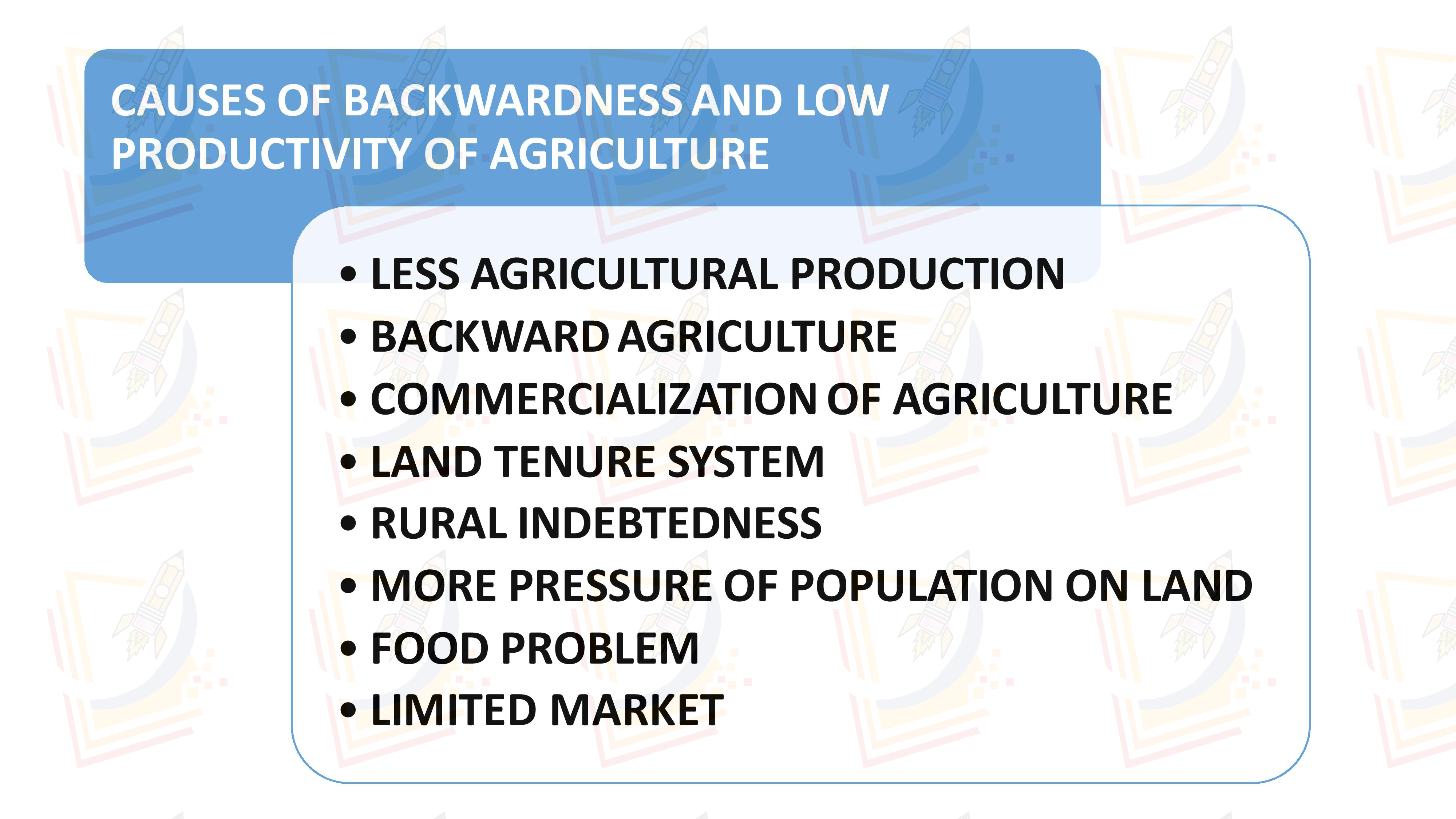INTRODUCTION
Agriculture is the art and science of cultivating the soil, growing crops and raising livestock. It includes the preparation of plant and animal products for people to use and their distribution to markets. Agriculture provides most of the world's food and fabrics.
At the time of independence, Indian agriculture was subsistence based and the principal source of livelihood. It was getting commercialized but it continued to be backward.
IMPORTANCE OF AGRICULTURE

- AGRICULTURE PLAYS VITAL ROLE IN GENERATING EMPLOYMENT : - In India at least two-thirds of the working population was based on the agriculture. In India other sectors have failed generated much of employment opportunity for the growing working population.
- CONTRIBUTION TO CAPITAL FORMATION : - Agriculture happens the largest industry development growth rate in India. It can play the important role in pushing the capital up.
- SUPPLY OF RAW MATERIAL TO AGRO BASED INDUSTRIES :- Agriculture supply raw material to various agrobased industries like sugar, jute, textile etc. Food processing industries are similarly dependent on the agriculture. Therefore the development of industries is also depending on agriculture.
- NEED OF LABOR FORCE :- A large number of skilled and unskilled laborers are required for the construction works and in other fields. This labor is supplied by Indian agriculture.
- GREATER COMPETITIVE ADVANTAGE :- Indian agriculture has provided greater competitive advantage because large number of agriculture products are export outside the countries.
- CONTRIBUTION TO NATIONAL INCOME :- Agriculture and its related activities having the significant share in the national income. But recently the share of agriculture sector was declining by the growth of agriculture sector.
- SOURCE OF LIVELIHOOD : - over two third of the Indian population i.e. working engaged towards the agriculture sector. As the estimation about 53% of working population is engaged in agriculture.
- SOURCE OF FOOD SUPPLY :- Agriculture product are the major source of food supply to the bulk of population in India. As per estimation about 60% household consumption.
CAUSES OF BACKWARDNESS AND LOW PRODUCTIVITY OF AGRICULTURE
INDIAN AGRICULTURE ON THE EVE OF INDEPENDENCE
At the time of independence, Indian agriculture was a subsistence based and the principle source of livelihood.

- LESS AGRICULTURAL PRODUCTION :- Production of Indian agricultural sector was less than its demand. The population was large but the agricultural production was very low. In 1947, 13 crore hectare of land was under cultivation.
- BACKWARD AGRICULTURE :- Because of the poverty of Indian peasant and lack of interest in the development of agriculture on the part of the Zamindar and the government, fertilizers, implements, of agriculture sector continuous to be low.
- COMMERCIALIZATION OF AGRICULTURE :- Agriculture was getting commercialized. Production for sale in the market started replacing subsistence farming.
- LAND TENURE SYSTEM :- Three principal land-tenure system are zamindari system, Mahalwari system, Rotary System. Because of these systems, a long chain of middlemen existed between the government and the actual cultivator.
- RURAL INDEBTEDNESS :- Several factors conspired to keep the farmers steeped in heavy indebtedness. These were excessive burden of land-rent, fall in the productivity of agriculture, uneconomic size of holding etc.
- MORE PRESSURE OF POPULATION ON LAND :- Pressure of population on land has increased manifold due to decay of cottage industries and lack of alternative avenues of employment. It was the size of holding rise in the population
- FOOD PROBLEM :- As a result of partition, 82 per cent of population and 77 per cent of geographical area came to India’s share. Large food grain producing areas went to west Pakistan, resulting in acute food shortage in India.
- LIMITED MARKET :- Some of the well developed markets/ mandis went to west Pakistan and East Pakistan like Karachi, Lahore, Dhaka, Islamabad,
Sind etc. It created hurdle in the sale of finished product in India.
